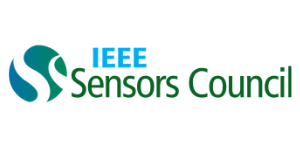
Presenter Bio
Dr Dimitra Georgiadou is a UKRI Future Leaders Fellow leading the Organic & Flexible Nanoelectronics lab in the School of Electronics and Computer Science at the University of
Southampton. She also serves as the Deputy Impact Champion and Outreach Officer in the UKRI Centre for Doctoral Training in Machine Intelligence for Nanoelectronic Devices and Systems
(MINDS-CDT). Previously she was Industrial Fellow at the Department of Materials, Imperial College London (ICL), working with PragmatIC, a UK-SME developing flexible radiofrequency electronic devices for the Internet of Things, and Marie Skłodowska-Curie Fellow at the Department of Physics (ICL). Dimitra earned her PhD in Chemical Engineering/Organic Electronics from the National Technical University of Athens (NTUA), Greece, while she holds a BSc in Chemical Engineering from the same University. She also holds a Master’s Degree (Honours) in Advanced Materials Science awarded jointly from the Technical University of Munich, Ludvig Maximilians University of Munich and University of Augsburg in Germany. Her research interests are the fabrication and optimisation of nanoscale opto/electronic devices with flexible substrates by applying novel materials concepts and alternative patterning techniques. She has so far co-authored more than 55 publications in peer-reviewed journals.
Abstract: Large area manufacturing of flexible nanoelectronics
Flexible electronics technology has made significant strides in the last decade. The potential for electronics that can be lightweight, flexible, bendable, practically conformable to any surface, is huge and has opened many new opportunities in growing sectors, such as wearables, biomedical applications and the Internet of Things. From a manufacturing standpoint, flexible electronics are known to be compatible with printing and in general low temperature (<150° C) solution-based techniques that are inexpensive and scalable to large areas. However, the high performance achieved in many incumbent electronic devices comes from extreme downscaling of device dimensions to tens of nanometres and/or the use of nanoscale materials (nanomaterials), which pose certain limitations to device structure design. More importantly, some of the processes commonly used in rigid electronics are not always compatible with flexible large area substrates, or they are not scalable, impeding the full commercial exploitation of this technology. In this tutorial, I will present some examples of nanopatterning techniques that allow fabrication of nanostructures at any type of substrate. I will show how they can be employed in the development of radiofrequency diodes, nanoscale light-emitting diodes, photodetectors and resistive switching memories using a variety of advanced materials deposited from solution at low temperatures, fully compatible with plastic (flexible) substrates. Then I will refer to specific applications in (opto) electronics and photonics that can be enabled by these advances in nanomanufacturing.




